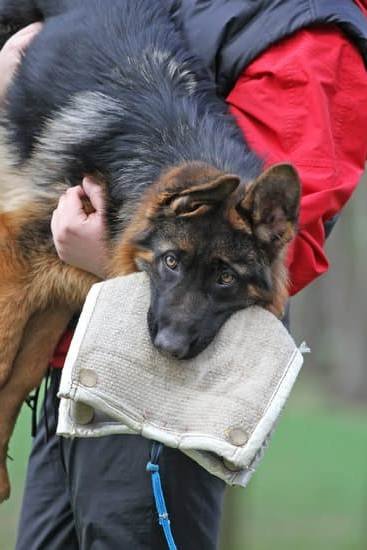Are you struggling with a dog who begs for food constantly? Understanding the root of your pet’s begging behavior is the first step in effectively training them. This article will provide you with practical tips and techniques on how to train a dog who begs for food, so you can enjoy mealtime without any unwanted behavior from your furry friend. From setting clear boundaries to using positive reinforcement, we’ve got you covered.
Begging for food is a common behavioral issue among dogs that can be challenging to address. However, with the right approach and consistency, it is possible to modify this behavior and establish healthier mealtime habits for your pet. In this article, we will explore various strategies and methods that can help you effectively train your dog not to beg for food.
Understanding the root of begging behavior is crucial in addressing this issue. Dogs may beg for food due to various reasons such as attention-seeking, boredom, or an attempt to fulfill their natural instincts. By understanding what triggers your dog’s begging behavior, you can tailor your training approach accordingly.
Setting Clear Boundaries and Expectations
When training a dog who begs for food, it is essential to establish clear boundaries and set realistic expectations. Here are some tips on how to achieve this:
1. Consistent Training: Consistency is key when setting boundaries for your dog’s begging behavior. Ensure that all family members are on the same page and enforce rules consistently.
2. Use Clear Cues: Teach your dog a specific cue or command that indicates when it is mealtime. This will help them understand when it is appropriate to expect food.
3. Avoid Reinforcement: It’s important not to reinforce begging behavior by giving in to your dog’s demands. Ignoring their begging, even if it’s difficult, will prevent them from associating the behavior with getting food.
4. Establish Feeding Areas: Designate a specific area for feeding your dog and discourage them from begging in other parts of the house.
By implementing these strategies, you can effectively communicate your expectations to your dog and minimize their begging behavior at mealtimes.
Remember that training a dog who begs for food takes time and patience. With consistency and clear communication, you can help your furry friend develop better mealtime manners.
Consistency in Training and Reinforcement
When it comes to training a dog who begs for food, consistency is key. Dogs thrive on routine and clear expectations, so it’s important to be consistent in your approach to addressing the begging behavior. Here are some tips on how to effectively train your dog to stop begging for food:
- Establish clear rules: Set clear boundaries and expectations for your dog when it comes to meal times and food. Consistently enforce these rules so that your dog understands what is and isn’t acceptable behavior.
- Use the same commands: When training your dog to stop begging, use the same commands every time. Whether it’s “down” or “go to your bed,” using consistent commands will help reinforce the desired behavior.
- Be consistent with rewards and consequences: If your dog begs for food and you give in even once, it can undo all of your training efforts. Similarly, if you ignore the begging behavior sometimes but not others, it can confuse your dog. Be consistent in rewarding good behavior and ignoring or redirecting unwanted behavior.
Consistency in training also means that everyone in the household needs to be on the same page. If one person allows the dog to beg while another doesn’t, it will only confuse the pet and hinder progress.
Remember that training a dog who begs for food takes time and patience. By being consistent in your approach and reinforcing positive behaviors, you can effectively teach your canine companion that begging is not acceptable.
Seeking professional help from a qualified dog trainer or behaviorist may also be beneficial if you’re struggling with this issue despite consistent effort. A professional can provide personalized guidance tailored to your specific situation and help you address any underlying issues contributing to the begging behavior.
Redirecting the Begging Behavior
Begging for food is a common behavior in dogs, but it can become a nuisance if not addressed properly. In this section, we will discuss how to redirect this begging behavior in your furry friend.
Ignoring the Begging
One effective way to redirect begging behavior is by simply ignoring it. When your dog starts begging for food, avoid giving them any attention or eye contact. This sends a clear message that their begging will not be rewarded.
Removing the Dog From the Situation
If ignoring the begging doesn’t work, another approach is to remove the dog from the situation. You can have them go to their bed or designated area while you eat. This teaches them that they are not allowed to beg during mealtimes.
Providing Distractions
Offering your dog a distraction such as a chew toy or puzzle feeder during mealtime can also be helpful in redirecting their attention away from begging. By engaging in an alternative activity, they will learn that they don’t need to beg for food.
Training a dog who begs for food requires patience and consistency. By implementing these redirection techniques, you can teach your furry companion proper mealtime manners and create a more peaceful dining experience for both you and your pet.
Using Positive Reinforcement Techniques
Positive reinforcement is a powerful tool when it comes to training dogs, especially those who beg for food. By utilizing positive reinforcement techniques, you can effectively train your dog to exhibit desirable behaviors and reduce begging at meal times.
Using Treats as Rewards
One of the most effective positive reinforcement techniques for training a dog who begs for food is using treats as rewards. When your dog refrains from begging, offer a small treat and verbal praise to reinforce the good behavior. Over time, your dog will associate not begging with receiving a delicious reward, which can help eliminate the behavior.
Clicker Training
Clicker training is another positive reinforcement technique that can be highly effective in curbing begging behavior. This method involves using a clicker to mark the desired behavior, followed by giving the dog a treat as a reward. With consistent clicker training, your dog will learn that not begging results in receiving a reward, leading to a decrease in this unwanted behavior.
Using Affection and Attention
In addition to treats and clicker training, using affection and attention as rewards can also be effective in training a dog who begs for food. When your dog refrains from begging during mealtimes, provide them with extra attention or physical affection as positive reinforcement. This technique can help strengthen the bond between you and your pet while discouraging begging behavior.
By implementing these positive reinforcement techniques consistently and patiently, you can effectively train your dog to stop begging for food during mealtimes. Remember that every dog is different, so it may take time to see significant changes in their behavior. If you’re struggling to train your dog on your own, seeking professional help from a certified trainer or behaviorist can provide additional guidance and support on how to train a dog who begs for food.
Creating a Feeding Schedule
One important aspect of training a dog who begs for food is to create a feeding schedule. Dogs are creatures of habit, and having a consistent feeding schedule can help reduce their tendency to beg. By feeding your dog at the same time each day, they will learn when to expect their meals and be less likely to beg for food at other times.
Another benefit of creating a feeding schedule is that it can help regulate your dog’s digestion and prevent overeating. Many dogs who beg for food may not be receiving proper nutrition or may be overeating because they are given scraps throughout the day. By sticking to a regular feeding schedule, you can ensure that your dog is getting the appropriate amount of food for their size and activity level.
When establishing a feeding schedule, it’s important to also consider the type of food you are giving your dog. Whether you are providing dry kibble, wet food, or a raw diet, having a consistent schedule for meals can help with digestion and overall health. In addition, if you have multiple dogs in your household, having set mealtimes can also prevent any food-related aggression or competition between them.
| Benefit of Feeding Schedule | Implementation Process |
|---|---|
| Regulates begging behavior | Establish specific meal times and stick to them consistently |
| Promotes healthy digestion | Consider the type of food being given and portion control |
| Prevents food-related aggression | Create separate eating areas for each dog if necessary |
Implementing Obedience Training
Obedience training is an essential aspect of teaching your dog to stop begging for food. This type of training helps establish you as the leader of the pack and teaches your dog self-control and discipline. A well-trained dog will understand commands such as “sit,” “stay,” and “leave it,” which are crucial for managing begging behavior.
To begin obedience training, start with short, frequent sessions to keep your dog engaged and prevent them from becoming bored or frustrated. Use positive reinforcement techniques, such as treats, praise, or toys, to reward good behavior when your dog follows commands or ignores food being offered.
Consistency is key in obedience training. Reinforce the same commands every day and be patient with your pet as they learn. With enough practice and encouragement, your dog will eventually understand that they must obey commands even in tempting situations like when you’re eating.
It’s important to note that some dogs may require more extensive obedience training than others, especially if they have a strong tendency to beg for food. In these cases, seeking professional help from a certified dog trainer or behaviorist can provide specialized guidance on how to train a dog who begs for food effectively.
| Training Technique | Description |
|---|---|
| Positive Reinforcement | Rewarding good behavior with treats or praise |
| Consistency | Reinforcing commands daily to establish obedience |
| Professional Help | Consulting a certified trainer or behaviorist for specialized guidance |
Seeking Professional Help if Needed
In conclusion, training a dog who begs for food requires a deep understanding of the root cause of this behavior and a commitment to consistent and effective training techniques. By setting clear boundaries and expectations, redirecting the begging behavior, using positive reinforcement techniques, creating a feeding schedule, and implementing obedience training, pet owners can address and change their dog’s begging habits.
It is crucial for pet owners to understand that seeking professional help may be necessary if their efforts at home prove unsuccessful. Professional dog trainers or animal behaviorists have the expertise and knowledge to assess individual cases and provide tailored solutions to address begging behavior. These professionals can also offer guidance on how to modify feeding schedules, structure meal times, and incorporate obedience training into daily routines.
Ultimately, training a dog who begs for food requires patience, consistency, and a deep understanding of canine behavior. With the right approach, pet owners can successfully teach their dogs to exhibit more appropriate behaviors around mealtimes. By incorporating these strategies into their training efforts, pet owners can cultivate a healthier relationship with their pets and foster well-behaved dining habits in their furry companions.
Frequently Asked Questions
How Do I Stop My Dog From Constantly Begging for Food?
To stop your dog from constantly begging for food, it’s important to establish clear boundaries and be consistent with them. Avoid giving in to the begging behavior, and instead, only feed your dog at set meal times. You can also provide your dog with interactive toys or treats to redirect their attention away from begging.
How Do You Break a Dog’s Food Obsession?
Breaking a dog’s food obsession involves addressing the root cause of the behavior. This may include ensuring that your dog is getting enough physical and mental stimulation through exercise and playtime. Additionally, you can work on obedience training to reinforce good behavior around food and teach your dog self-control.
Is Begging for Food a Learned Behavior for a Dog?
Begging for food is often a learned behavior for dogs. If a dog has been rewarded in the past for begging with scraps or treats, they will continue to exhibit this behavior in the hopes of receiving more food.
It’s important for pet owners to not reinforce begging by giving in to their dog’s demands, as this only perpetuates the behavior.

Welcome to the blog! I am a professional dog trainer and have been working with dogs for many years. In this blog, I will be discussing various topics related to dog training, including tips, tricks, and advice. I hope you find this information helpful and informative. Thanks for reading!





